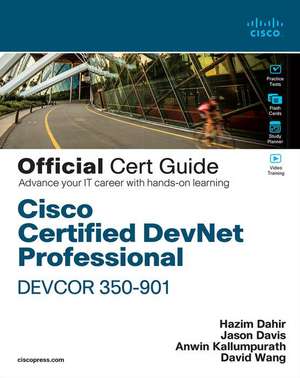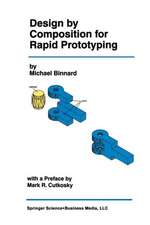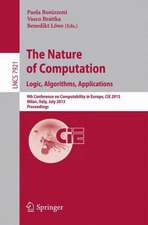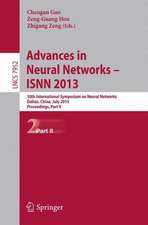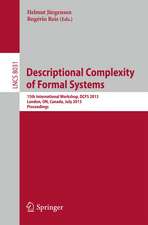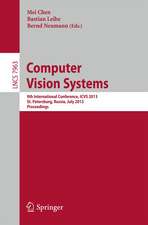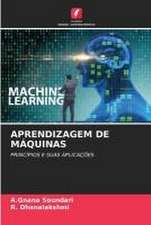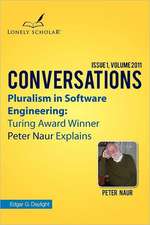Cisco Certified DevNet Professional DEVCOR 350-901 Official Cert Guide: Official Cert Guide
Autor Hazim Dahir, Jason Davis, Quinn Snyder, Anwin Kallumpurath, Stuart Clark, David Wangen Limba Engleză Paperback – 20 iul 2022
Din seria Official Cert Guide
- 20%
 Preț: 277.65 lei
Preț: 277.65 lei - 20%
 Preț: 380.74 lei
Preț: 380.74 lei - 20%
 Preț: 285.88 lei
Preț: 285.88 lei - 20%
 Preț: 358.23 lei
Preț: 358.23 lei - 20%
 Preț: 216.92 lei
Preț: 216.92 lei - 20%
 Preț: 355.14 lei
Preț: 355.14 lei - 20%
 Preț: 380.52 lei
Preț: 380.52 lei - 20%
 Preț: 254.26 lei
Preț: 254.26 lei - 20%
 Preț: 379.62 lei
Preț: 379.62 lei - 20%
 Preț: 376.72 lei
Preț: 376.72 lei - 20%
 Preț: 380.26 lei
Preț: 380.26 lei - 20%
 Preț: 272.84 lei
Preț: 272.84 lei - 20%
 Preț: 397.67 lei
Preț: 397.67 lei - 20%
 Preț: 462.46 lei
Preț: 462.46 lei - 20%
 Preț: 396.94 lei
Preț: 396.94 lei - 20%
 Preț: 528.80 lei
Preț: 528.80 lei - 20%
 Preț: 291.97 lei
Preț: 291.97 lei - 20%
 Preț: 428.72 lei
Preț: 428.72 lei - 18%
 Preț: 795.72 lei
Preț: 795.72 lei - 15%
 Preț: 576.65 lei
Preț: 576.65 lei - 19%
 Preț: 11044.97 lei
Preț: 11044.97 lei - 23%
 Preț: 1093.37 lei
Preț: 1093.37 lei - 20%
 Preț: 250.76 lei
Preț: 250.76 lei - 23%
 Preț: 1377.95 lei
Preț: 1377.95 lei - 20%
 Preț: 258.71 lei
Preț: 258.71 lei
Preț: 375.88 lei
Preț vechi: 469.84 lei
-20% Nou
Puncte Express: 564
Preț estimativ în valută:
71.92€ • 75.09$ • 59.53£
71.92€ • 75.09$ • 59.53£
Carte disponibilă
Livrare economică 15-29 martie
Livrare express 01-07 martie pentru 68.24 lei
Preluare comenzi: 021 569.72.76
Specificații
ISBN-13: 9780137370443
ISBN-10: 013737044X
Pagini: 752
Dimensiuni: 195 x 237 x 43 mm
Greutate: 1.45 kg
Editura: Pearson
Seria Official Cert Guide
ISBN-10: 013737044X
Pagini: 752
Dimensiuni: 195 x 237 x 43 mm
Greutate: 1.45 kg
Editura: Pearson
Seria Official Cert Guide
Cuprins
Introduction xxviii Part I Software Development and Design Chapter 1 Software Development Essentials 2 "Do I Know This Already?" Quiz 2 A Brief History of the Future 4 The Evolution 5 Automation, Orchestration, and DevOps 6 Software Architecture and Design 9 Architecture Requirements 10 Functional Requirements 13 Nonfunctional Requirements 13 Architectural Patterns 14 Software Development Lifecycle (SDLC) Approach 15 Software Development Models 17 Waterfall 17 Agile Software Development 18 Scrum 19 Extreme Programming 19 Kanban 19 Lean 19 Which Model? 20 Architecture and Code Reviews 21 Software Testing 22 Exam Preparation Tasks 23 Chapter 2 Software Quality Attributes 26 "Do I Know This Already?" Quiz 26 Foundation Topics 29 Quality Attributes and Nonfunctional Requirements 29 Brief Overview of the Most Common Quality Attributes 29 Measuring Quality Attributes 35 Modularity in Application Design 36 Benefits of Modularity 36 Modularity Coding Best Practices 37 Microservices and Modular Design 40 Scalability in Application Design 41 Horizontal Scalability 41 Vertical Scalability 42 Practical Scalability in Application Design 43 High Availability and Resiliency in Application Design 44 Failure or Fault Detection 46 Recovery: High Availability in Practice 47 Prevention 50 High Availability Planning and the Responsibilities of the Developer 50 High Availability Deployment Models 51 Exam Preparation Tasks 53 Chapter 3 Architectural Considerations and Performance Management 56 "Do I Know This Already?" Quiz 57 Foundation Topics 59 Maintainable Design and Implementation 59 Maintaining a SOLID Design 60 Single Responsibility Principle (SRP) 61 Open-Closed Principle (OCP) 62 Liskov's Substitution Principle (LSP) 63 Interface Segregation Principle (ISP) 64 Dependency Inversion Principle (DIP) 65 Latency and Rate Limiting in Application Design and Performance 66 Designing for Application Low Latency and High Performance 69 Architecture Trade-offs 69 Improving Performance 69 Design and Implementation for Observability 73 Logging 74 Metrics 76 Tracing 77 Good Documentation Practices: An Observability Reminder 78 Database Selection Criteria 79 Database Requirements Gathering 80 Data Volume 81 Data Velocity 82 Data Variety 82 Exam Preparation Tasks 83 Chapter 4 Version Control and Release Management with Git 86 "Do I Know This Already?" Quiz 86 Foundation Topics 88 Version Control and Git 88 Git Workflow 88 Branch and Pull Workflow 89 Pros 89 Cons 89 Sample Setup 90 Sample Branch and Pull Workflow 90 Fork and Pull Workflow 104 Pros 105 Cons 105 Sample Setup 105 Sample Fork and Pull Workflow 106 Git Branching Strategy 121 What Is a Branching Strategy? 121 The Most Important Factor When Selecting a Git Branching Strategy 122 Popular Git Branching Strategies 122 When to Use GitHub Flow 122 When to Use Git Flow 123 When to Use GitLab Flow 123 Recommended GitHub Settings 125 Configuring the PR Merge Button 125 Configuring a Branch Protection Rule to Require Code Reviews 125 Exam Preparation Tasks 127 Part II APIs Chapter 5 Network APIs 130 "Do I Know This Already?" Quiz 130 Foundation Topics 132 What Are APIs? 132 Methods 133 Objects 134 Formats 134 APIs vs. No API 135 Web Scraping 135 Jeff Bezos's API Mandate: How the AWS API-Driven Cloud Was Born 136 Calling an API 138 What Is API Development? 144 API Architectural Styles 146 Selecting an API Style 147 HTTP/JSON 149 REST/JSON 150 Cache-Control 151 REST vs. RPC 152 gRPC 154 OpenAPI/Swagger 155 Network API Styles 157 NETCONF APIs 158 Exam Preparation Tasks 160 Chapter 6 API Development 162 "Do I Know This Already?" Quiz 163 Foundation Topics 165 Creating API Clients 165 Code Generation Client API Libraries for IMDb 165 Adding CLI Wrapper Code 174 Making Calls to IMDb Using a CLI Program 174 API Design Considerations 177 API Authentication Models 179 Flow Control (Pagination vs. Streaming) 181 Error Handling, Timeouts, and Rate Limiting 184 Caching 188 Exam Preparation Tasks 189 Part III Application Development, Deployment, and Security Chapter 7 Application Deployment 192 "Do I Know This Already?" Quiz 193 Foundation Topics 194 The Evolution of Application Responsibilities 194 The Hybridization of Development and Operations 194 The Journey to DevOps 195 A Cultural Shift 196 The Emergence of the Site Reliability Engineer(ing) 196 SRE Responsibilities and Tenets 197 SRE vs. DevOps 198 Continuous Integration/Continuous Delivery (Deployment) 198 Continuous Integration (CI) 199 Continuous Delivery: One of the CDs 200 Continuous Deployment: The Other CD 200 CI/CD Pipeline Implementation 201 Pipeline Components 203 Build 204 Test 205 Release/Deliver 205 Deploy 205 Adding Deployment to Integration 207 Deploying to Infrastructure (Terraform + Atlantis) 207 Deploying Applications (Flux + Kubernetes) 213 Application Deployment Methods over Time 218 The 2000s: Sysadmins, Terminals, and SSH 218 The 2010s: Automated Configuration Management 220 The 2020s: The Clouds Never Looked So Bright 224 Managed Kubernetes (e.g., GKE) 224 Containers on Serverless Clouds (e.g., AWS ECS on Fargate) 227 Serverless Functions (e.g., AWS Lambda) 234 Software Practices for Operability: The 12-Factor App 238 Factor 1: Codebase 239 Factor 2: Dependencies 239 Factor 3: Config 239 Factor 4: Backing Services 240 Factor 5: Build, Release, Run 240 Factor 6: Processes 240 Factor 7: Port Binding 241 Factor 8: Concurrency 241 Factor 9: Disposability 241 Factor 10: Dev/Prod Parity 241 Factor 11: Logs 242 Factor 12: Admin Processes 242 Summary 243 Exam Preparation Tasks 243 Chapter 8 Security in Application Design 246 "Do I Know This Already?" Quiz 247 Foundation Topics 248 Protecting Privacy 250 Personally Identifiable Information 250 Data States 250 Laws, Regulations, and Standards for Protecting Privacy 251 Storing IT Secrets 252 Public Key Infrastructure (PKI) 254 Certificate Revocation 256 Hierarchical Multiple CA Infrastructure 257 TLS, PKI, and Web Applications Security 257 Browser Security Issues 261 Securing Web and Mobile Applications 262 Injection Attacks 263 Cross-Site Scripting 264 OAuth Authorization Framework 266 How Does OAuth Work? 266 OAuth 2.0 Two-Legged Authorization 268 OAuth 2.0 Three-Legged Authorization 269 Additional OAuth Authorization Code Grant Types 271 OAuth 2.0 Client Credentials 271 Resource Owner Password Credential Flow 272 OAuth 2.0 Implicit Flow 275 OAuth 2.0 Authorization Code Flow 276 OAuth 2.0 PKCE Flow 278 Refresh Token Flow 280 OAuth 2.0 Device Code Flow 281 Exam Preparation Tasks 283 Part IV Infrastructure and Automation Chapter 9 Infrastructure 286 "Do I Know This Already?" Quiz 286 Foundation Topics 288 Network Management 288 Methods of Network Provisioning 290 CLI/Console 291 SNMP 294 File Transfer Methods 297 Element Management Systems 297 Embedded Management 299 Zero-Touch Provisioning (ZTP) 300 Atomic or SDN-Like/Controller-Based Networking 303 Advanced Concepts - Intent-Based Networking 305 Summary 307 Exam Preparation Tasks 307 Chapter 10 Automation 310 "Do I Know This Already?" Quiz 311 Foundation Topics 313 Challenges Being Addressed 313 Differences of Equipment and Functionality 314 Proximity of Management Tools and Support Staff 316 Speed of Service Provisioning 317 Accuracy of Service Provisioning 319 Scale 323 Doing More with Less 329 Software-Defined Networking (SDN) 329 What Is SDN and Network Programmability? 329 Approach 330 Nontraditional Entities 331 Industry Impact 331 New Methods 331 Normalization 332 Enabling Operations 332 Enabling Career Options 332 Use Cases and Problems Solved with SDN 332 Overview of Network Controllers 334 The Cisco Solutions 335 Application Programming Interfaces (APIs) 335 REST APIs 336 API Methods 337 API Authentication 337 API Pagination 337 Payload Data Formats JSON XML 338 XML 338 JSON 340 Cross-Domain, Technology-Agnostic Orchestration (CDTAO) 342 Impact to IT Service Management and Security 343 Exam Preparation Tasks 344 Chapter 11 NETCONF and RESTCONF 346 "Do I Know This Already?" Quiz 346 Foundation Topics 348 Catalyst for NETCONF 348 Content 349 Operations 350 Messages 350 Transport 351 Atomic and Model-Driven Configuration Management 351 How to Implement NETCONF 354 Enabling NETCONF on IOS XE 355 Enabling NETCONF on IOS XR 356 Enabling NETCONF on NX-OS 357 Basic Manual Use of NETCONF 358 YANG Models 365 The Evolution with RESTCONF 371 The RESTCONF Protocol Stack 372 RESTCONF Operations 372 RESTCONF and Authentication 373 RESTCONF URIs 373 Performing a RESTCONF GET Operation with cURL 375 Performing RESTCONF GET Operations with the Postman Utility 377 Management Solutions Using NETCONF and RESTCONF 382 Exam Preparation Tasks 383 Chapter 12 Model-Driven Telemetry 386 "Do I Know This Already?" Quiz 387 Foundation Topics 389 Transformation of Inventory, Status, Performance, and Fault Monitoring 389 Scaling with the Push Model 391 How to Implement Model-Driven Telemetry 393 Dial-In and Dial-Out Mode 395 Encoding (Serialization) 395 Protocols 396 Configuring MDT in IOS-XR 398 Configuring Dial-Out Mode 398 Step 1: Create a Destination Group 398 Step 2: Create a Sensor Group 400 Step 3: Create a Subscription 400 Step 4: Verify the Dial-Out Configuration 401 Configuring Dial-In Mode 402 Step 1: Enable gRPC 402 Step 2: Create a Sensor Group 404 Step 3: Create a Subscription 405 Step 4: Validate the Configuration 405 Picking Sensor Paths and Metrics 407 Researching Public Documentation 407 Extracting Model Support from the Device - NETCONF Manually 408 Extracting Model Support from the Device - Python and NETCONF 410 Digging into the YANG Models 414 Installing Docker to the Linux VM 414 Installing the YANG Suite Docker Image to the Linux VM 415 Practical Application of Streaming Telemetry 423 Using Telegraph, InfluxDB, and Grafana 426 Installing InfluxDB 426 Installing Telegraf 428 Beyond MDT: Event-Driven Telemetry 434 Other Considerations: Disk Usage 440 Frequency of Telemetry Push 441 Exam Preparation Tasks 441 Chapter 13 Open-Source Solutions 444 "Do I Know This Already?" Quiz 445 Foundation Topics 447 Infrastructure-as-Code (IaC) Concepts 447 Imperative and Declarative Models 448 Provisioning or Configuration Management 449 Differences Between Agent and Agentless Solutions 450 Agent-Based Solutions: Puppet and Chef 450 Agentless Solutions: Ansible and Terraform 474 Installing Ansible from the Package Manager 474 Installing the Latest Ansible from a Virtual Python Environment with pip 476 Configuring Ansible Inventory 481 Creating a Project-Level Inventory File 482 Creating an Ansible Playbook to Obtain show Command Results 483 Filtering, Templating, and Jinja2 487 Using Ansible to Modify Device Configurations 488 Terraform Overview 493 Installing Terraform 494 Using Terraform 496 Cisco Solutions Enabled for IaC 501 Exam Preparation Tasks 502 Chapter 14 Software Configuration Management 508 "Do I Know This Already?" Quiz 508 Foundation Topics 510 Software Configuration Management (SCM) 510 SCM Definitions and Standards 510 Why Do You Need SCM? 511 Which SCM Process Is Best for You? 512 Ansible 512 Terraform 515 Terraform or Ansible: A High-Level Comparison 518 Business and Technical Requirements 519 Architectural Decisions 519 Technical Debt 520 Exam Preparation Tasks 521 Chapter 15 Hosting an Application on a Network Device 524 "Do I Know This Already?" Quiz 524 Foundation Topics 527 Benefits of Edge Computing 527 Virtualization Technologies 527 Type-1 Hypervisors 528 Type-2 Hypervisors 528 Linux Containers (LXC) 529 Docker Containers 530 Application Container Ideas 532 Platforms Supporting Application Containers 533 How to Implement Application Containers 534 Validating Prerequisites 534 Enabling Application Hosting Framework 536 Using Cisco DNA Center for App Hosting 538 Using Cisco IOx Local Manager for App Hosting 547 Using the Command-Line Interface for App Hosting 553 Interacting with App Hosted iPerf3 556 Best Practices for Managing Application Containers 563 Exam Preparation Tasks 565 Part V Platforms Chapter 16 Cisco Platforms 568 "Do I Know This Already?" Quiz 568 Foundation Topics 571 Webex 571 Enabling the Webex REST API/SDK Access 572 Webex API Documentation 573 API Examples 575 SDK Examples 577 Firepower 582 Enabling API/SDK Access to Firepower 582 Firepower API Documentation 583 Meraki 592 Enabling API/SDK Access to Meraki 592 Meraki API Documentation 593 Meraki SDK Documentation 594 Meraki Authorization 596 Intersight 601 Enabling API Access to Intersight 601 Intersight API Documentation 603 Intersight SDK Documentation 605 Intersight Authorization 606 UCS Manager 611 Enabling API Access to UCS Manager 611 UCS Manager API Documentation 611 Python SDK Documentation 617 PowerShell SDK Documentation 622 Additional UCS Manager Programmability Resources 628 DNA Center 628 Enabling API/SDK Access to DNA Center 630 DNA Center API Documentation 631 DNA Center SDK Documentation 635 SDK Authorization 637 AppDynamics 639 Exam Preparation Tasks 646 Chapter 17 Final Preparation 648 Getting Ready 648 Tools for Final Preparation 649 Pearson Cert Practice Test Engine and Questions on the Website 649 Accessing the Pearson Test Prep Software Online 649 Accessing the Pearson Test Prep Software Offline 649 Customizing Your Exams 650 Updating Your Exams 651 Premium Edition 651 Chapter-Ending Review Tools 652 Suggested Plan for Final Review/Study 652 Summary 652 Appendix A Answers to the "Do I Know This Already?" Questions 654 Appendix B Cisco DevNet Professional DEVCOR 350-901 Exam Updates 672 Glossary 675 Online Elements Appendix C Memory Tables Appendix D Memory Tables Answer Key Appendix E Dashboard Basics
Glossary
Glossary
Notă biografică
Jason Davis is a distinguished engineer for the DevNet program in the Developer Relations organization at Cisco. His role is technical strategy lead for the DevRel organization as he collaborates with various Cisco business unit leaders, partners, customers, and other industry influencers. Jason is focused on automation, orchestration, cloud-native technologies, and network management/operations technologies. He has a tenured career working with hundreds of customers, worldwide, in some of the largest network automation and management projects and is sought out for consulting and innovative leadership. His former experience as a U.S. Army Signal Corps officer has provided insights to defense, government, and public-sector projects, while his extensive work in professional services at Cisco has spanned commercial, large-enterprise, and service provider segments. Most of his customer engagements have been in automotive, manufacturing, large retail, large event venues, and health care. Jason has achieved Cisco Live Distinguished Speaker Hall of Fame status and is an automation/monitoring lead for the network operations center (NOC) at Cisco Live events in the U.S. and Europe. He resides in Apex, North Carolina, and enjoys IoT projects, home automation, and audio/video technologies in houses of worship. Jason and his wife, Amy, have four children whom they homeschool and cherish daily. Jason is found on social media @SNMPguy.
Hazim Dahir, CCIE No. 5536, is a distinguished engineer at the Cisco office of the CTO. He is working to define and influence next-generation digital transformation architectures across multiple technologies and verticals. Hazim started his Cisco tenure in 1996 as a software engineer and subsequently moved into the services organization focusing on large-scale network designs. He's currently focusing on developing architectures utilizing security, collaboration, Edge computing, and IoT technologies addressing the future of work and hybrid cloud requirements for large enterprises. Through his passion for engineering and sustainability, Hazim is currently working on advanced software solutions for electric and autonomous vehicles with global automotive manufacturers. Hazim is a Distinguished Speaker at Cisco Live and is a frequent presenter at multiple global conferences and standards bodies. He has multiple issued and pending patents and a number of innovation and R&D publications.
Stuart Clark, DevNet Expert #2022005, started his career as a hairdresser in 1990, and in 2008 he changed careers to become a network engineer. After cutting his teeth in network operations, he moved to network projects and programs. Stuart joined Cisco in 2012 as a network engineer, rebuilding one of Cisco's global networks and designing and building Cisco's IXP peering program. After many years as a network engineer, Stuart became obsessed with network automation and joined Cisco DevNet as a developer advocate for network automation. Stuart contributed to the DevNet exams and was part of one of the SME teams that created, designed, and built the Cisco Certified DevNet Expert. Stuart has presented at more than 50 external conferences and is a multi-time Cisco Live Distinguished Speaker, covering topics on network automation and methodologies. Stuart lives in Lincoln, England, with his wife, Natalie, and their son, Maddox. He plays guitar and rocks an impressive two-foot beard while drinking coffee. Stuart can be found on social media @bigevilbeard.
Quinn Snyder is a developer advocate within the Developer Relations organization inside Cisco, focusing on datacenter technologies, both on-premises and cloud-native. In this role, he aligns his passion for education and learning with his enthusiasm for helping the infrastructure automation community grow and harness the powers of APIs, structured data, and programmability tooling. Prior to his work as a DA, Quinn spent 15 years in a variety of design, engineering, and implementation roles across datacenter, utility, and service provider customers for both Cisco and the partner community. Quinn is a proud graduate of Arizona State University (go Sun Devils!) and a Cisco Network Academy alumnus. He is the technical co-chair of the SkillsUSA - Arizona Internetworking contest and is involved with programmability education at the state and regional level for the Cisco Networking Academy. Quinn resides in the suburbs of Phoenix, Arizona, with his wife, Amanda, and his two kids. In his free time, you can find him behind a grill, behind a camera lens, or on the soccer field coaching his daughter's soccer teams. Quinn can be found on social media @qsnyder, usually posting a mixture of technical content and his culinary creations.